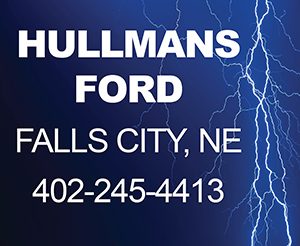The Southeast District Health Department (SEDHD) had confirmed nine more cases of COVID-19 in Richardson County bringing the total to sixteen. This information was sent to print before it was adjusted on Monday night. The print edition will have the old totals. The SE District Health Department released this statement, “The Southeast District Health Department confirms ten additional cases of COVID-19. There are now 84 confirmed cases within the district. Please note that there was a data entry error made in last Friday’s press release affecting the cumulative counts for Otoe, Richardson, and Johnson counties. The discrepancy has been resolved and the most accurate counts are reflected in the press release below.”
These cases include:
A male in his seventies was confirmed on July 20, 2020.
A female in her fifties.
A male in his twenties.
A female in her sixties, were all confirmed on July 22, 2020.
A male in his thirties.
A male in his thirties.
A male in his twenties.
A female in her fifties, were all confirmed on July 24, 2020.
A female in her thirties, was confirmed on July 27, 2020.
The Journal was not informed of what cases were related to the data entry error.
All identified close contacts will be asked to self-quarantine. Individuals with symptoms consistent with COVID-19 should self-isolate to avoid transmitting the virus to others. COVID-19 symptoms include cough, shortness of breath or difficulty breathing, fever, chills, muscle pain, sore throat, and new loss of taste or smell. In many cases, a person will have more than one of these symptoms.
As of July 28, 2020, the total cumulative confirmed cases of COVID-19 within the district is 84 with Richardson County being the second highest county of recorded cases behind Otoe County.
Case counts by county are: Johnson, 11; Nemaha, thirteen; Otoe, 38; Pawnee, five; and Richardson, 17.
SEDHD reviews all reported test results as soon as they become available. They will report numbers each Monday, Wednesday and Friday to most accurately reflect current cumulative case numbers in the district.
According to the CDC, available data indicates that people with mild to moderate COVID-19 remain infectious no longer than 10 days after symptom onset. People with more severe to critical illness or severe immunocompromise likely remain infectious no longer than 20 days after symptom onset.
If you have or think you might have COVID-19, it is important to stay home and away from others. When you can be around others depends on different factors for different situations.
If you are diagnosed with COVID-19, a public health worker may call you to check-in on your health, discuss who you’ve been in contact with, and ask where you spent time while you may have been infectious and able to spread COVID-19 to others. You will also be asked to stay at home and self-isolate, if you are not doing so already.
Your name will not be revealed to those you may have exposed, even if they ask.
Self-isolation means staying at home in a specific room away from other people and pets and using a separate bathroom, if possible.
Self-isolation helps slow the spread of COVID-19 and can help keep your family, friends, neighbors, and others you may come in contact with healthy.
If you need support or assistance while self-isolating, your health department or community organizations may be able to provide assistance.
Symptoms of COVID-19 can include fever or chills, cough, shortness of breath or difficulty breathing, fatigue, muscle or body aches, headache, new loss of taste or smell, sore throat, congestion or runny nose, nausea or vomiting, and diarrhea. If your symptoms worsen or become severe, you should seek medical care. Severe symptoms include trouble breathing, persistent pain or pressure in the chest, confusion, inability to wake or stay awake, or bluish lips or face.


